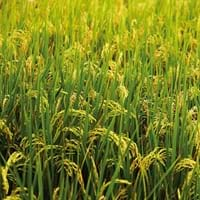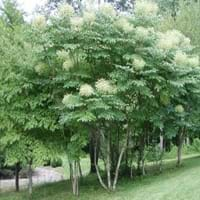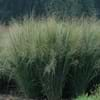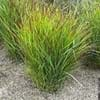Life Span
Annual
Perennial
Origin
Eastern Africa, Northern Africa, Southern Asia, Southeastern Asia
Mid-Atlantic United States, Southeastern United States, South-Central United States, Texas
Types
Akia Beruin Red, Ofada Rice, Topaz
Not Available
Number of Varieties
Not Available
Habitat
Muddy habitat
Dappled Shade, Shady Edge, Woodland Garden Secondary
USDA Hardiness Zone
8-15
4-9
Sunset Zone
Not Available
3a, 3b, 4, 5, 6, 7, 8, 9, 14, 15, 16, 17, 18, 19, 20, 21, 22, 23, 24
Habit
Clump-Forming
Thicket/Colonizing
Minimum Height
Not Available
Minimum Width
Not Available
Flower Color
White
White, Green, Ivory
Flower Color Modifier
Bicolor
Bicolor
Fruit Color
White
Purple, Black
Leaf Color in Spring
Green
Green, Blue Green, Dark Green
Leaf Color in Summer
Light Green
Green, Blue Green, Dark Green
Leaf Color in Fall
Green
Yellow, Green, Purple, Blue Green, Dark Green, Yellow green
Leaf Color in Winter
Not Available
Not Available
Leaf Shape
Grass like
bipinnate
Plant Season
Summer, Fall
Spring, Summer, Fall, Winter
Sunlight
Full Sun
Full Sun, Partial Sun
Growth Rate
Very Fast
Fast
Type of Soil
Clay, Loam
Clay, Loam, Sand
The pH of Soil
Acidic, Neutral, Alkaline
Acidic, Neutral, Alkaline
Soil Drainage
Average
Well drained
Bloom Time
Not Available
Summer
Tolerances
Wet Site, Salt
Pollution, Soil Compaction
Where to Plant?
Ground
Ground
How to Plant?
Seedlings, Transplanting
Cuttings, Divison, Seedlings
Plant Maintenance
Medium
Medium
Watering Requirements
Keep plant submerged in water
Needs high amount of water
In Summer
Ample Water
Lots of watering
In Spring
Lots of watering
Moderate
In Winter
Consistently
Average Water
Soil pH
Acidic, Neutral, Alkaline
Acidic, Neutral, Alkaline
Soil Type
Clay, Loam
Clay, Loam, Sand
Soil Drainage Capacity
Average
Well drained
Sun Exposure
Full Sun
Full Sun, Partial Sun
Pruning
No need to prune
Remove damaged leaves, Remove dead branches, Remove dead leaves
Fertilizers
Fertilize the soil before planting, Phosphorous, Potassium
All-Purpose Liquid Fertilizer
Pests and Diseases
Bacteria, Birds, fungus, Nematodes, Rats, Snails, Viruses
Aphids, Leaf spot, Mealybugs
Plant Tolerance
Salt, Wet Site
Drought
Flowers
Insignificant
Showy
Flower Petal Number
Single
Single
Foliage Texture
Medium
Coarse
Foliage Sheen
Matte
Matte
Attracts
Birds
Bees, Butterflies, Insects, Not Available
Allergy
Not Available
Skin irritation
Aesthetic Uses
Not Used For Aesthetic Purpose
Borders, Woodland margins
Beauty Benefits
Good for skin
Not Available
Environmental Uses
Air purification, Prevent Soil Erosion
Air purification
Medicinal Uses
Energy, High blood pressure, Skin Disorders, Swelling
Alterative, Analgesic, Diaphoretic, Opthalmic
Part of Plant Used
Seeds
Bark, Leaves, Root
Other Uses
Starch, Used as a nutritious food item, Used As Food
Used as a potherb
Used As Indoor Plant
No
No
Used As Outdoor Plant
Yes
Yes
Garden Design
Container, Dried Flower/Everlasting, Edible, Herb / Vegetable, Houseplant, Tropical, Water Gardens
Feature Plant, Foundation, Mixed Border
Botanical Name
ORYZA
ARALIA spinosa
Common Name
Rice
American Angelica Tree, Devil's Walking Stick, Hercules' Club
In Hindi
चावल
Devil's Walking Stick
In German
Reis
Teufelsspazierstock
In French
riz
Walking bâton du diable
In Spanish
arroz
Bastón del Diablo
In Greek
ρύζι
Περπάτημα Stick διαβόλου
In Portuguese
arroz
Vara andando de diabo
In Polish
ryż
Diabelski laska
In Latin
rice
Virgam diaboli
Phylum
Magnoliophyta
Magnoliophyta
Class
Liliopsida
Magnoliopsida
Family
Poaceae
Araliaceae
Clade
Not Available
Angiosperms, Asterids, Eudicots
Tribe
Not Available
Not Available
Subfamily
Not Available
Aralioideae
Number of Species
Not Available
Not Available
Season and Care of Rice Plant and Devil's Walking Stick
Season and care of Rice Plant and Devil's Walking Stick is important to know. While considering everything about Rice Plant and Devil's Walking Stick Care, growing season is an essential factor. Rice Plant season is Summer and Fall and Devil's Walking Stick season is Summer and Fall. The type of soil for Rice Plant is Clay, Loam and for Devil's Walking Stick is Clay, Loam, Sand while the PH of soil for Rice Plant is Acidic, Neutral, Alkaline and for Devil's Walking Stick is Acidic, Neutral, Alkaline.
Rice Plant and Devil's Walking Stick Physical Information
Rice Plant and Devil's Walking Stick physical information is very important for comparison. Rice Plant height is Not Available and width Not Available whereas Devil's Walking Stick height is 300.00 cm and width 460.00 cm. The color specification of Rice Plant and Devil's Walking Stick are as follows:
Rice Plant flower color: White
Rice Plant leaf color: Green
Devil's Walking Stick flower color: White, Green and Ivory
- Devil's Walking Stick leaf color: Green, Blue Green and Dark Green
Care of Rice Plant and Devil's Walking Stick
Care of Rice Plant and Devil's Walking Stick include pruning, fertilizers, watering etc. Rice Plant pruning is done No need to prune and Devil's Walking Stick pruning is done Remove damaged leaves, Remove dead branches and Remove dead leaves. In summer Rice Plant needs Ample Water and in winter, it needs Consistently. Whereas, in summer Devil's Walking Stick needs Lots of watering and in winter, it needs Average Water.





